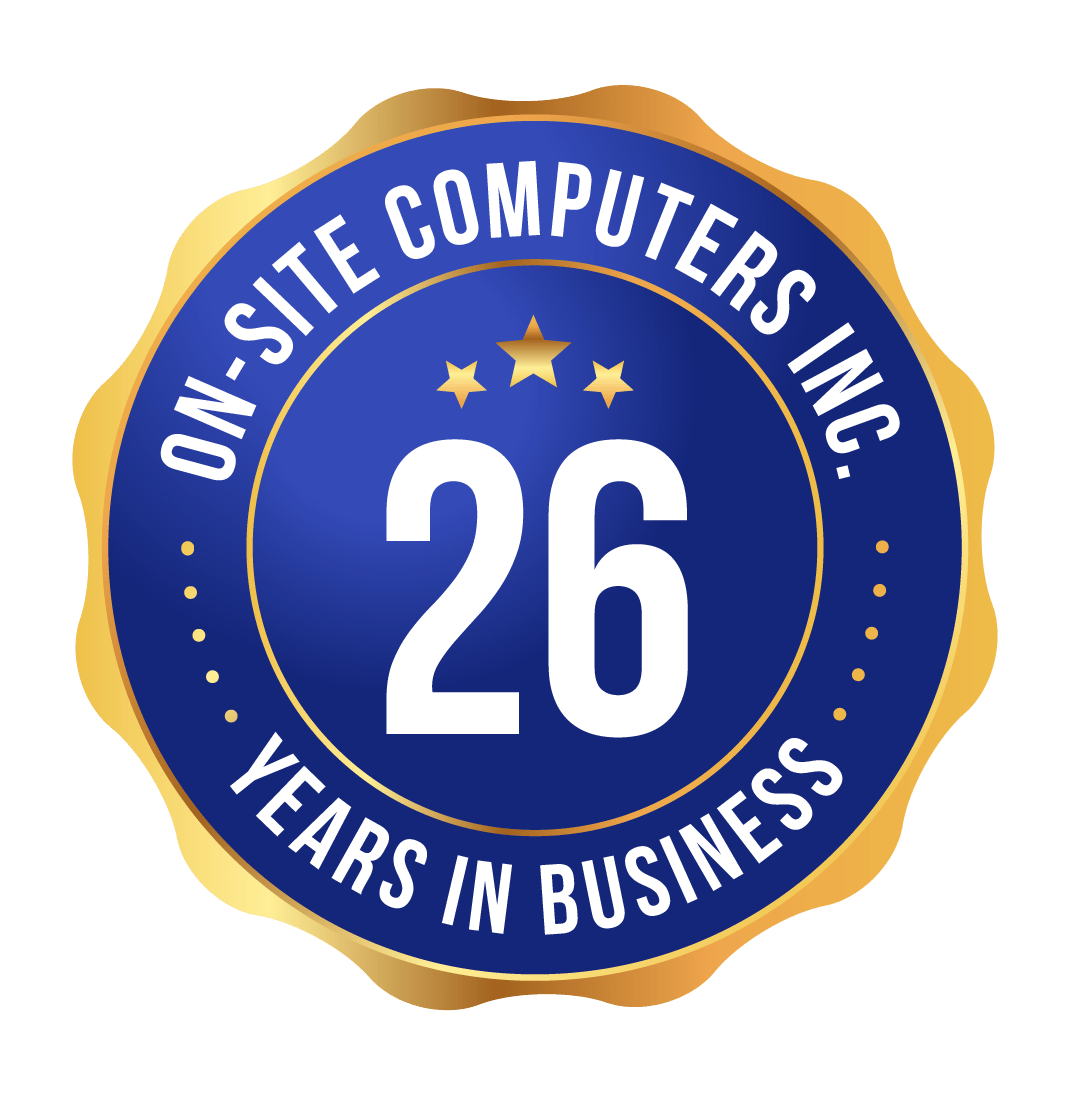Is Your Managed IT Services Provider Prioritizing Business Objectives or Just Fixing Computers?
In today’s technology-driven business landscape, having a reliable managed IT services provider (MSP) is crucial. Your MSP should be a strategic partner dedicated to helping your business achieve its objectives and desired outcomes. By aligning their services with your company’s goals, an MSP can add significant value and boost efficiency, security, and growth, giving you a competitive edge in your industry.
Evaluating the alignment between your business’s objectives and your MSP’s focus is essential to maximizing the benefits of this partnership. It’s important to analyze different IT service delivery models and consider which will best support your organization’s needs. Also, an outcomes-based approach to IT solutions can help ensure that the services provided by your MSP contribute directly to achieving your business objectives. This partnership with your MSP promotes clear communication, proactive reporting, and a results-driven mindset, ultimately empowering your business to thrive.
Key Takeaways
- Aligning with an MSP that focuses on your business objectives ensures added value and increased efficiency.
- Analyzing different IT service delivery models helps you identify solutions that best support your organization’s needs.
- An outcomes-based approach to IT solutions promotes clear communication and proactive reporting, contributing to business success.
Evaluating Business Objectives Alignment
Understanding Your Business Goals
As managed IT services providers, we need to understand your business objectives. This understanding allows us to create tailored IT solutions to drive growth and provide a competitive edge. The first step in aligning IT with your business goals is establishing clear objectives, including increasing revenue, streamlining operations, enhancing customer satisfaction, or fostering innovation. Once we have identified your objectives, we can design an IT strategy aligning with your mission.
Some common business objectives are:
- Improved performance
- Increased customer satisfaction
- Operational efficiency
- Innovation and growth
Assessing Provider’s Strategic Focus
After understanding your business goals, the next step is to assess the strategic focus of your managed IT services provider. This involves evaluating their capacity to proactively address changing technology and industry demands and supporting ongoing business transformation.
Here’s a table highlighting critical factors in assessing a provider’s strategic focus:
| Criteria | Description |
|---|---|
| Scalable solutions | Offers IT solutions that adapt to evolving business requirements |
| Technological innovation | Continuously invests in modern technology and innovative practices |
| Proactive collaboration | Actively communicates and collaborates with you on IT strategies |
| Industry understanding | Demonstrates knowledge of your industry’s unique challenges |
We aim to remain agile and responsive to your needs, employing cutting-edge technology and best practices to support your business objectives. Successful IT-business alignment requires a strong partnership, and we’re committed to working closely with you to ensure optimal results. By focusing on your goals and delivering scalable, innovative solutions, we can help your organization thrive in today’s competitive marketplace.
Analyzing IT Service Delivery Models
In this section, we will look closer at the IT service delivery models, mainly focusing on proactive versus reactive approaches and the importance of value-added services.
Proactive Versus Reactive Approaches
Within the realm of managed IT services, there are two main approaches: proactive and reactive. Proactive IT service providers take a more preventative approach by continuously monitoring your systems, identifying potential issues, and addressing them before they escalate. This helps reduce downtime and keeps your business running smoothly. In contrast, reactive IT service providers respond to issues as they arise and fix them.
Let’s break down these approaches:
- Proactive
- Continuous monitoring and maintenance
- Identifies potential issues early
- Reduces downtime and improves productivity
- Reactive
- Fixes issues as they occur
- May lead to more extended downtime and lost productivity
As a business, finding a managed IT services provider that focuses on a proactive approach is essential and ensuring that your business objectives and outcomes are prioritized and aligned with the IT strategy.
Beyond Break-Fix: Value-Added Services
A managed IT services provider should go beyond simply addressing and fixing computer and network issues. They should offer value-added services that support your current technology environment and help your business adapt and grow.
Here are some examples of value-added services that a managed IT services provider should offer:
- Strategic IT planning and consulting: Helping you align your IT strategy with your business goals and objectives.
- Security and compliance management: Ensuring that your systems and data are protected from threats and in compliance with industry regulations.
- Backup and disaster recovery: Ensuring the continuity of your business operations during accidents, disasters, or other unforeseen circumstances.
- Cloud solutions: Facilitating adoption and management of cloud technologies and services, enabling your business to scale and stay competitive.
- Helpdesk and user support: Provide efficient and effective employee support, address their questions, and resolve issues promptly.
By partnering with an IT service provider that offers value-added services, you are investing in your business’s future, enabling growth, and ensuring the achievement of your business objectives and desired outcomes.
Outcomes-Based IT Solutions
Transitioning to an outcomes-based IT managed services provider (MSP) goes beyond merely managing and troubleshooting your computer and network issues. An outcomes-based MSP aligns its services with your overall business objectives, ensuring that your technology infrastructure adequately supports your strategic goals. This section will address two critical aspects of outcomes-based IT solutions: monitoring and measuring success and continuous improvement through ROI analysis.
Monitoring and Measuring Success
For your business to achieve optimal results, your MSP must establish a robust and transparent system to monitor and measure success. Key performance indicators (KPIs) should be identified and tracked. Some common KPIs include:
- System uptime: The percentage of time your systems are operational and available.
- Response time: How quickly your MSP resolves technical issues.
- User satisfaction: Measures the end-user experience when interacting with your technology infrastructure.
By regularly monitoring these KPIs, we can identify areas for improvement and ensure that our services are better aligned with your business objectives.
Continuous Improvement and ROI Analysis
Continuous improvement and constant analysis of return on investment (ROI) are essential to maintain a focus on outcomes and achieve the best results. Here’s a brief overview of how we will engage in these processes:
- Establish a baseline: We will track current performance levels to provide a reference point for measuring improvement.
- Set realistic targets: Based on your business objectives, we will work together to set achievable targets for each KPI.
- Identify opportunities for improvement: Using data-driven insights, we will pinpoint areas where we can optimize your technology infrastructure.
- Implement changes: We will make adjustments to achieve the set targets.
- Measure the impact: We will track the changes’ success, providing a clear understanding of the actual ROI.
Engaging in these activities ensures a continuous improvement process that yields better results and drives your business toward achieving its objectives and outcomes.
Managed IT as a Business Partner
Collaboration for Innovation
Companies must stay ahead of the curve in today’s fast-paced business environment. A Managed IT Services Provider (MSP) that focuses on your business objectives and outcomes, not just fixing computers and networks, is a valuable asset that can spur innovation. When you partner with an MSP, you gain access to specialized knowledge, cutting-edge tools, and industry insights that enable your in-house team to innovate and stay competitive.
A few advantages of collaborating with a managed IT services provider include:
- Access to a broader range of expertise in various technology domains.
- Increased efficiency and productivity through the use of advanced tools and methodologies.
- Enhanced cybersecurity measures to protect your business from evolving threats.
- Strategic guidance on using technology to achieve your business objectives.
Aligning Technology with Business Growth
A Managed IT Services Provider that focuses on your business objectives and outcomes helps align technology solutions with your overall growth strategy. By understanding your company’s goals, an MSP can recommend, implement, and manage the right mix of solutions tailored to your needs.
Here’s how an MSP can contribute to your business growth:
- Scalability: As your business expands, your IT infrastructure must adapt to handle increased workloads and new technologies. An MSP can help you scale seamlessly and cost-effectively, ensuring your systems keep up with your growth.
- Improved customer satisfaction: An MSP can increase customer satisfaction and retention by optimizing your IT infrastructure and ensuring minimal downtime.
- Risk mitigation: Proactively addressing potential risks, such as data breaches or compliance issues, can save your business from costly fines, loss of productivity, and reputation damage.
- Cost savings: With the right partner, you can reduce IT expenses by efficiently using resources, consolidating services, and leveraging the expertise of the MSP.
Communication and Reporting
As your Managed IT Services Provider, we understand that the focus should not solely be on fixing computers and networks but also on supporting your business objectives and enabling desirable outcomes. This section will discuss two key aspects – “Transparent Reporting Standards” and “Regular Performance Reviews.”
Transparent Reporting Standards
We believe that providing transparent reporting standards is crucial for maintaining a solid partnership between our clients and us. This includes delivering reports with clear and easy-to-understand language, presenting metrics that underscore the value of our managed services, and utilizing visual aids such as tables and charts. By incorporating these elements into our reporting practices, we ensure you can confidently track our performance against your goals and make informed decisions.
- Language: Keeping jargon to a minimum and using clear, concise terms
- Key Metrics: Reporting on essential performance indicators that align with your business objectives
- Visual Aids: Utilizing tables, charts, and graphs to make the data more accessible
Regular Performance Reviews
We conduct regular performance reviews to enhance our partnership and ensure continuous alignment with your organization’s goals. These reviews enable us to assess our managed services’ effectiveness, identify improvement areas, and discuss necessary adjustments.
- Scheduled Reviews: Conducting quarterly or bi-annual sessions to evaluate performance trends
- Feedback Channels: Encouraging open communication between your team and ours to discuss concerns and feedback
- Adjustments and Improvements: Implementing necessary changes based on insights gained from our collaboration

Selecting the Right IT Services Provider
Criteria for Choosing a Provider
When choosing a Managed IT Services Provider (MSP), consider the following factors to ensure alignment with your business objectives and outcomes:
- Experience and expertise: Select a provider with a track record of success in managing IT needs for businesses similar to yours. Also, find a provider with a well-rounded knowledge of diverse technologies and IT solutions.
- Customizable services: Make sure the MSP offers services tailored to your specific requirements and can adapt their offerings as your business needs evolve. Look for a provider who can provide flexible solutions rather than one-size-fits-all packages.
- Security and compliance: Verify the MSP’s commitment to security, data protection, and regulatory compliance. This is especially important in industries with strict regulatory requirements, such as finance or healthcare.
- Scalability: Choose a provider that can scale their services to accommodate your company’s growth and expansion. This is particularly important for small businesses and startups anticipating rapid development in the coming years.
- Communication: Seek an MSP that offers transparent and open communication channels. This will help establish a strong working relationship and ensure that your concerns and queries are promptly addressed.
The Role of Trust and Reliability
Trust and reliability are paramount when selecting an MSP. One way to gauge the trustworthiness of a potential provider is to consult client testimonials and case studies. Additionally, seek referrals from colleagues and industry peers who have worked with the MSP in question.
A reliable MSP should also provide:
- Transparent pricing: A clear and comprehensive pricing structure that allows you to budget accordingly and avoid surprise costs down the line.
- Relevant certifications: Proof of the MSP’s commitment to maintaining industry certifications demonstrating their capabilities and technical expertise.
- Assigned Client Services Managers: Dedicated support staff who understand your business needs and can provide personalized assistance.






